Martin & Co. and a Woman’s Influence on the “First American Guitar”
From Madame de Goñi, a Spanish guitar virtuoso of the 1800s, to the skilled women behind guitar production today, we look into what makes Martin & Co. a leader in innovation.
She Shreds recently had the opportunity to take a field trip to the C.F. Martin and Co. headquarters in rural Nazareth, Pennsylvania, the location of Martin manufacturing since 1839. We were eager to dive deeper into the Martin 186-year timeline and see for ourselves the inspiration behind the recent release of the Size 1 de Goñi Authentic 1843 guitar, as well as the expanding definition of who makes and plays a Martin guitar.
First on our agenda was a tour of the Martin factory. Considered one of the oldest guitar manufacturers in the United States, Martin is unique in that it still heavily relies on handwork by skilled craftspeople rather than production automation. Take for example the delicate pearl inlays Martin is notorious for: Many of the Martin guitars in the past 25 years, with inlay incorporated into the design, have passed through the hands of artist Luann Werner.
Luann Werner: Pearl Inlay Artist
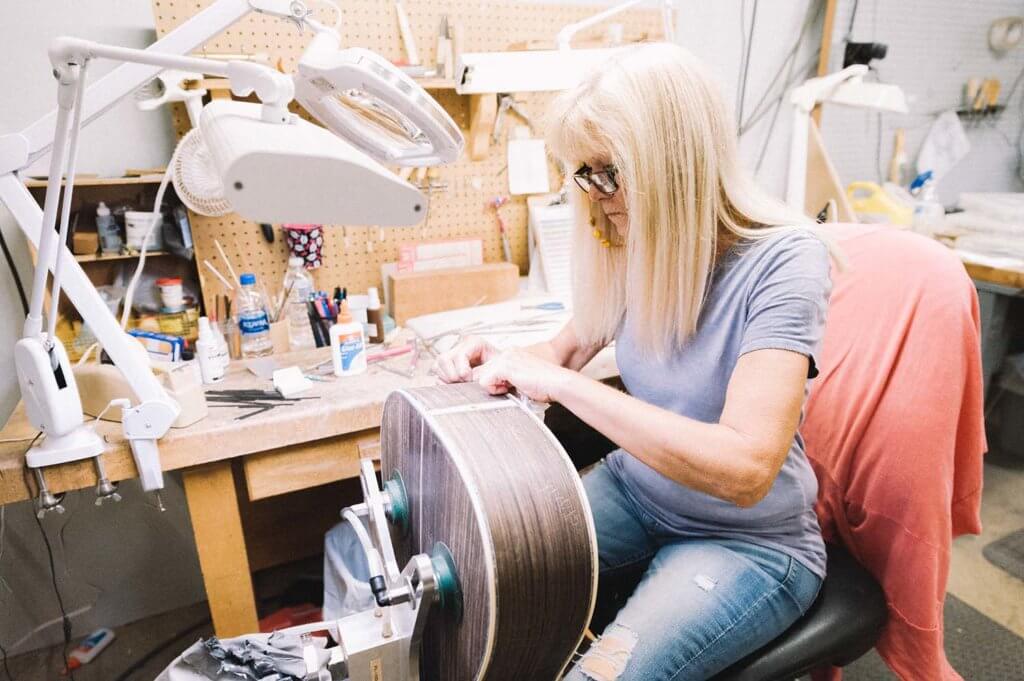
Werner has been at Martin for over 30 years and has spent the last 25 as a pearl inlay artist. When asked about her craft, a very tedious and no-room-for-error task, Werner shared the somewhat stressful learning process behind her skillset: “The material falls apart easily. So when you’re putting a miter on something and it falls apart, it’s kind of scary. But the more you do it, the better you get at it.” So what keeps someone like Werner coming back for decades to a high pressure position within Martin? Personal satisfaction: “Even though it’s not easy, when you’re finished and it looks great, it’s rewarding.”
Sue Wagner: Pre-Finish Sander
Sue Wagner has been with the company for 22 years, serving primarily as a pre-finish sander on guitar necks—a position responsible for transforming raw wood into a perfect surface ready for the next steps of neck building. The patience and practiced eye-for-detail required as a sander led Wagner to pearl inlay, making her a great addition to the department where she’s been helping out for the last two years. At her workstation, next to Werner’s, she stresses that both sanding and pearl inlay are consequential at Martin: “There’s a lot to learn here. It’s a challenge and it’s not easy. But for the standards we have for this quality of instrument, we have to really take our time and be careful.”
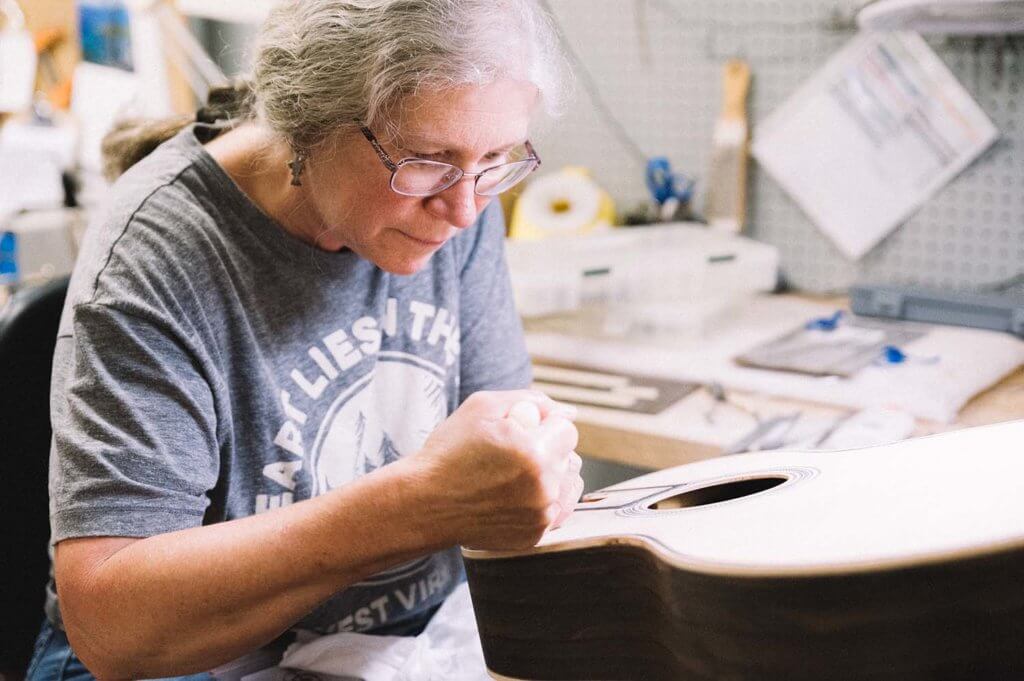
Leslie Mammele: Introduced CNC Technology to Martin & Co.
When Martin does choose to automate parts of their production methods, they go for technology that improves the working conditions of their employees instead of replacing them. Leslie Mammele, who started out with Martin in the early ‘90s as the CAD/CAM CNC programming manager, brought CNC technology into their production line as means to reduce work-related injuries. “We had a lot of workplace injuries from repetitive motion,” says Mammele. “So we started to figure out how we could automate this without affecting the handmade quality of the Martin guitar.”
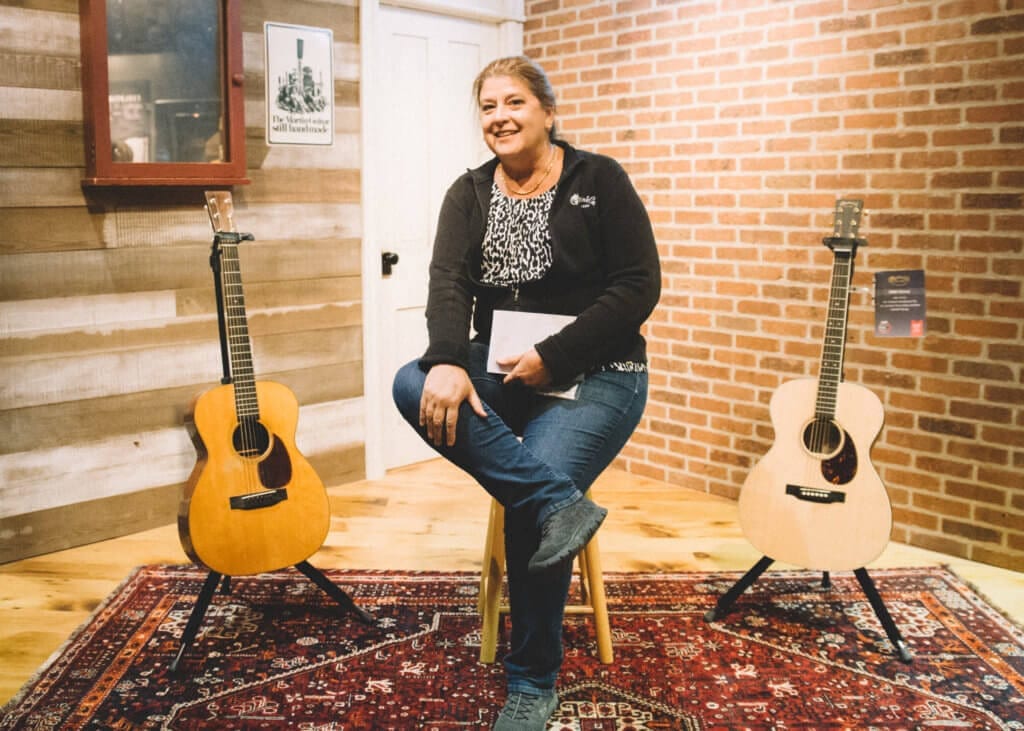
At first, the idea of new technology in the production line was apprehensively viewed by long-standing staff committed to the traditional practices behind making Martin guitars. But once Mammele made clear that these machines were being implemented to improve staff lives both inside and outside of work, all were on board. “We were able to reduce the hogging operations that would help people with their carpal tunnel injuries,” says Mammele. “So we didn’t take out the handmade part of it, we adjusted the [repetitive] part that people didn’t really need to do.”
Madame de Goñi and the World’s First X-Braced Guitar
In 2019, Martin continues to value their tried and true production methods, and we see this most notably with the release of their Size 1 de Goñi Authentic 1843 guitar, debuted at this year’s Winter NAMM and considered by Martin staff to be “the most complicated Authentic ever made.” The forms and tooling to accommodate the unique details of the Martin de Goñi guitar, such as recreating the early version Martin dovetail neck joint, had to be found or recreated before guitar production could begin—not to mention the careful handling required to X-ray the interior for exact measurements, as well as finding sustainable wood sources that wouldn’t compromise the tone heard with the original.

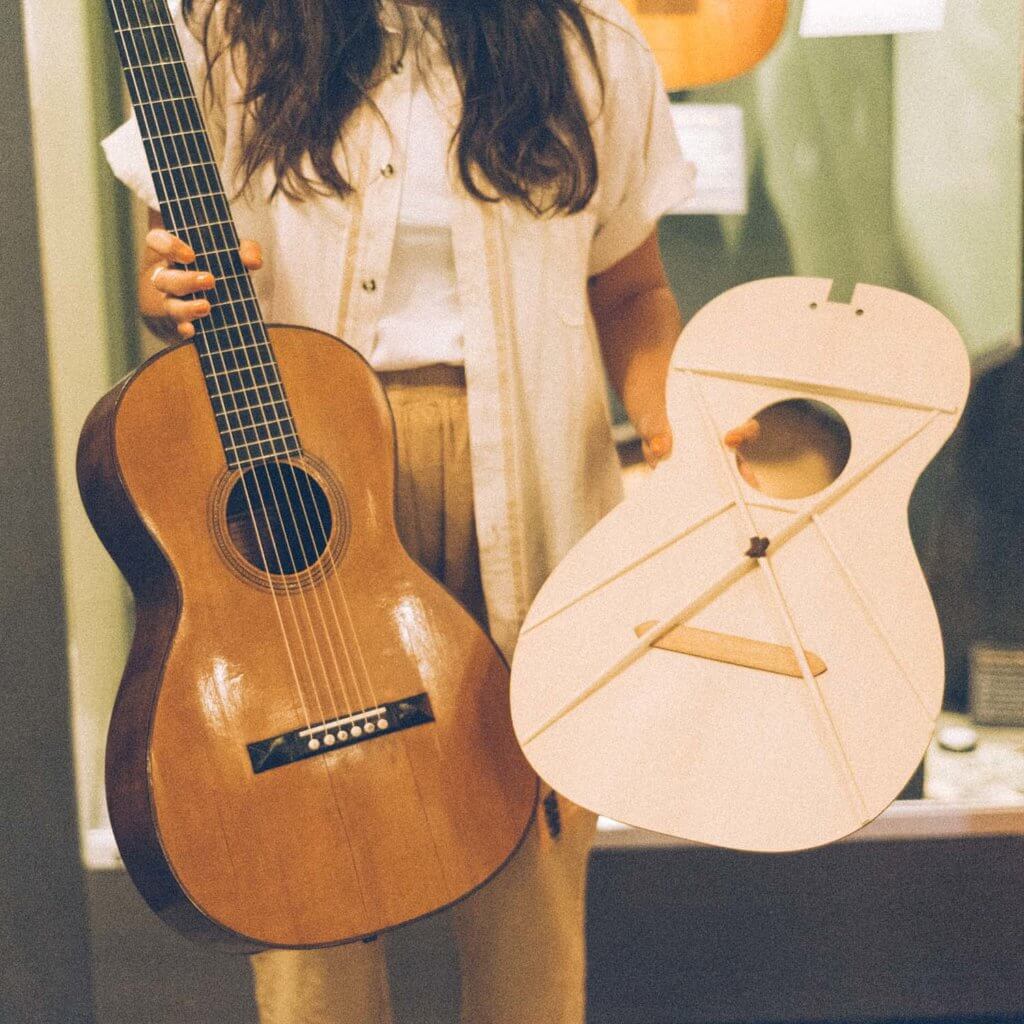
One of the first to admire the difference of a Martin acoustic was Madame Delores Nevares de Goñi, a highly revered, Spanish guitar virtuoso of the 1800s, and a significant character in the Martin legacy. After immigrating to the United States in the 1840s, Madame de Goñi gained much admiration and respect within the first five years of her arrival. In February 1842, a Boston publication known as The Musical Cabinet wrote:
So, what makes this guitar an important milestone in Martin history? The Goñi Authentic harks back to Martin’s first Size 1 model acoustic and the earliest X-braced guitar ever documented. As stated in an earlier article on She Shreds, the X-braced system used in early Martin guitars influenced the entire acoustic industry and helped to create what is known as the “Martin sound” and arguably “the starting point for what American guitars would become,” according to Martin’s Museum & Archives Specialist, Jason Ahner:
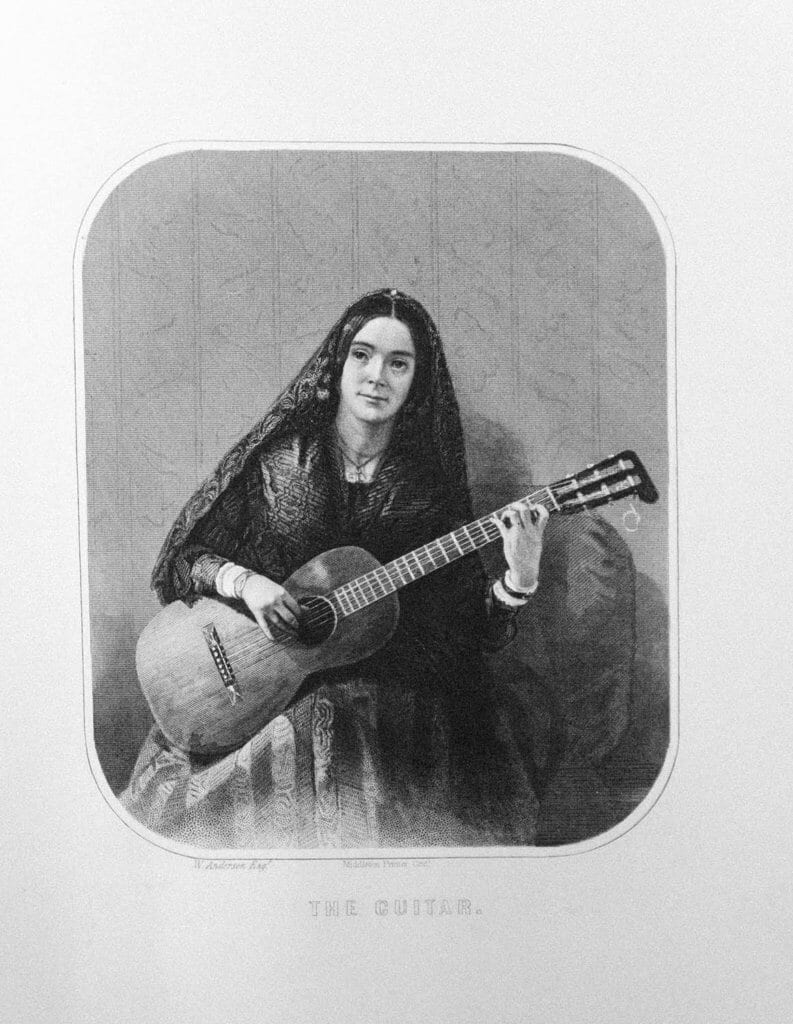
“Madame de Gony [sic] is a most delightful performer of the guitar, and is certainly an artiste of high merit. She appears to have the most perfect command of the instrument. Her performances were distinguished for neatness, beauty, grace, sweetness, power, variety, finish, expression, and pathos. We have never heard anything like it. She was received by the audience with the warmest enthusiasm.”
While Madame de Goñi was winning East Coast hearts, C.F. Martin Sr., a recent German immigrant, started crafting Spanish-inspired guitars in response to the mid-1800s U.S. music scene, which coveted anything Spanish. Crossing paths with Martin Sr. at a party hosted at his home, Madame de Goñi was hesitant to believe that anything could be better than her beloved Spanish guitar. However, she agreed to try out a guitar that was custom built for her by Martin Sr., fashioned after her own guitar but including unique Martin characteristics, such as the recently developed X-braced system. After playing a few songs, she then stowed her own guitar away, proclaiming, “I’m through with that. I don’t care for it any longer. This is the guitar I want.” Thus, establishing Martin as a leading innovator in guitar history.
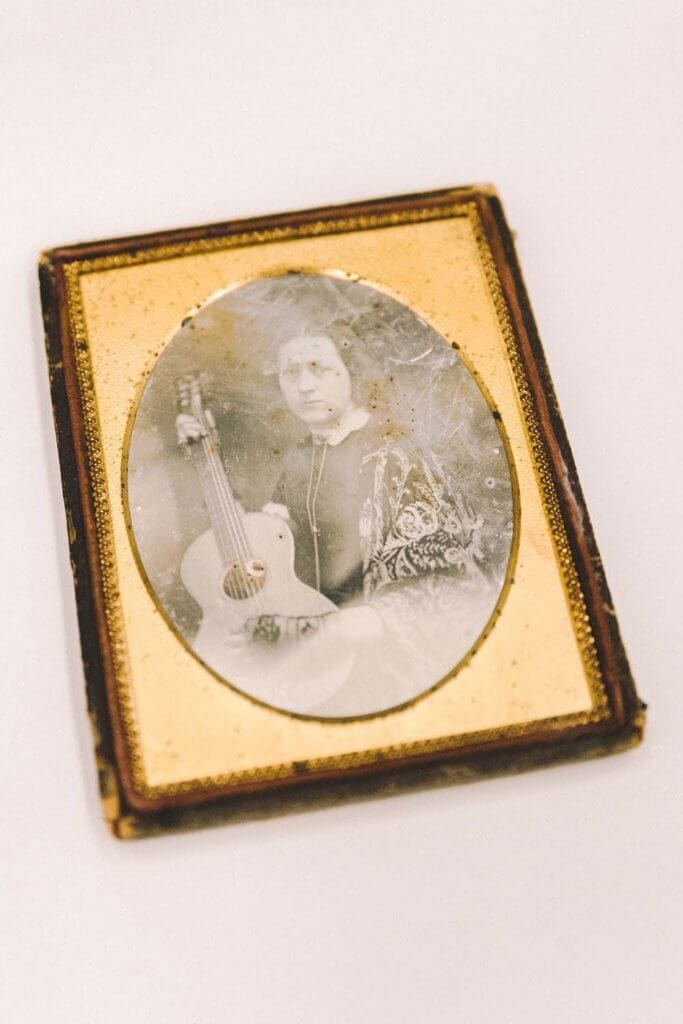
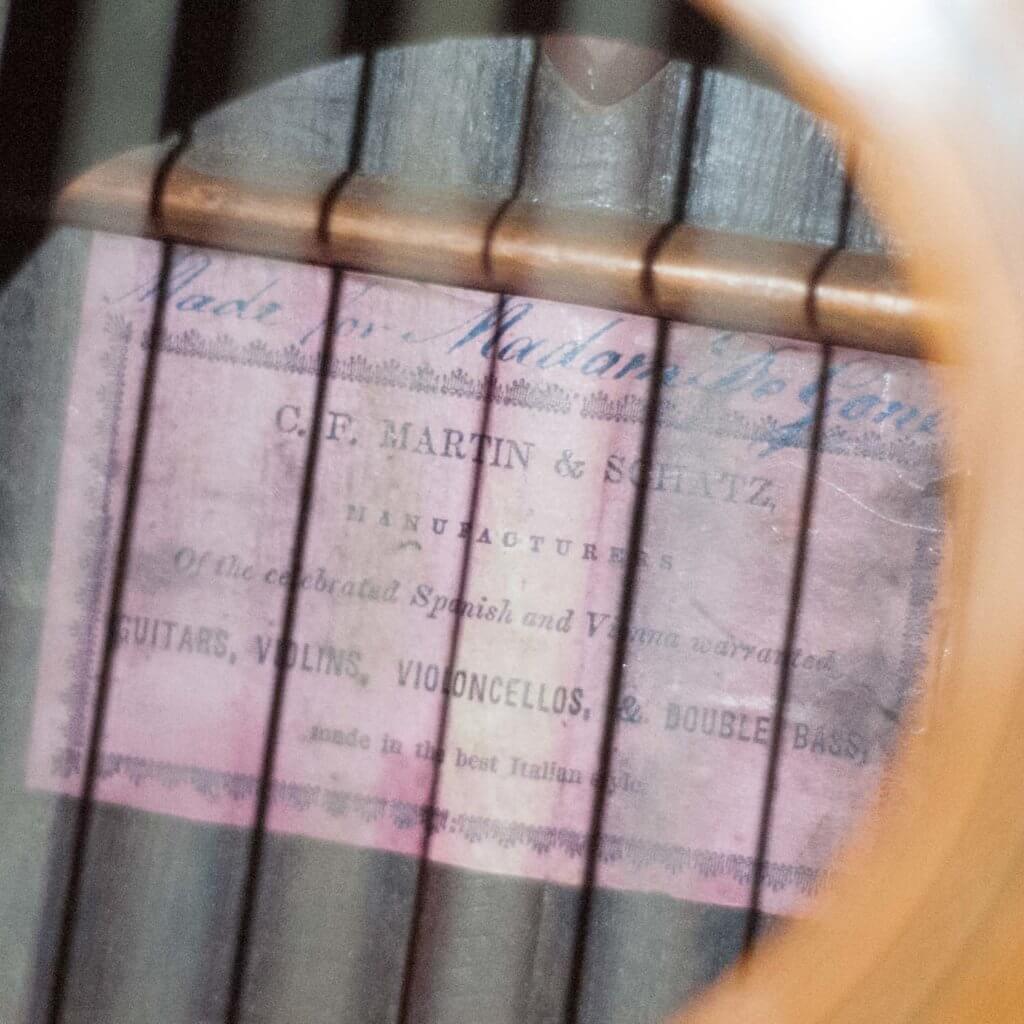
Today, the Madame de Goñi custom sits in the Martin Guitar Museum alongside a rare photo of her. Peering into the glass case, you can see the original label within the sound hole, which reads, Made for Madame de Gone [sic]. Surrounding it are other Martin milestones within the context of the late 19th century music history. To our surprise, we noticed that the photos and artifacts of reputable and admired musicians of that era were primarily women. It felt shocking to be in a museum showcasing an earlier time in which women—albeit specifically white women—were not only appreciated for their musical abilities but were also gifted with custom made guitars from society’s most skilled builders. A woman’s endorsement of Martin was valued as a key to success; a far cry from where the guitar ended up in the 21st century.
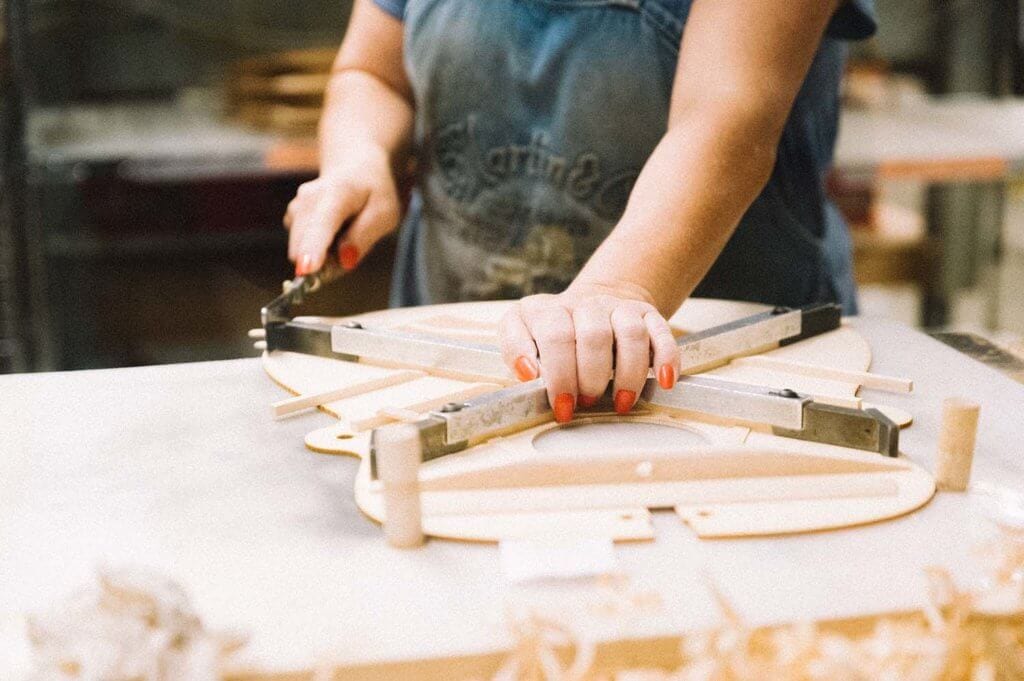
However, observing the people behind the scenes who build, manage, and shape Martin’s legacy, we’ve found that the involvement of women is more than an attempt to acclimate with modern practices; it’s an understanding that women influence good business practices and bring quality to an instrument built to last a lifetime.
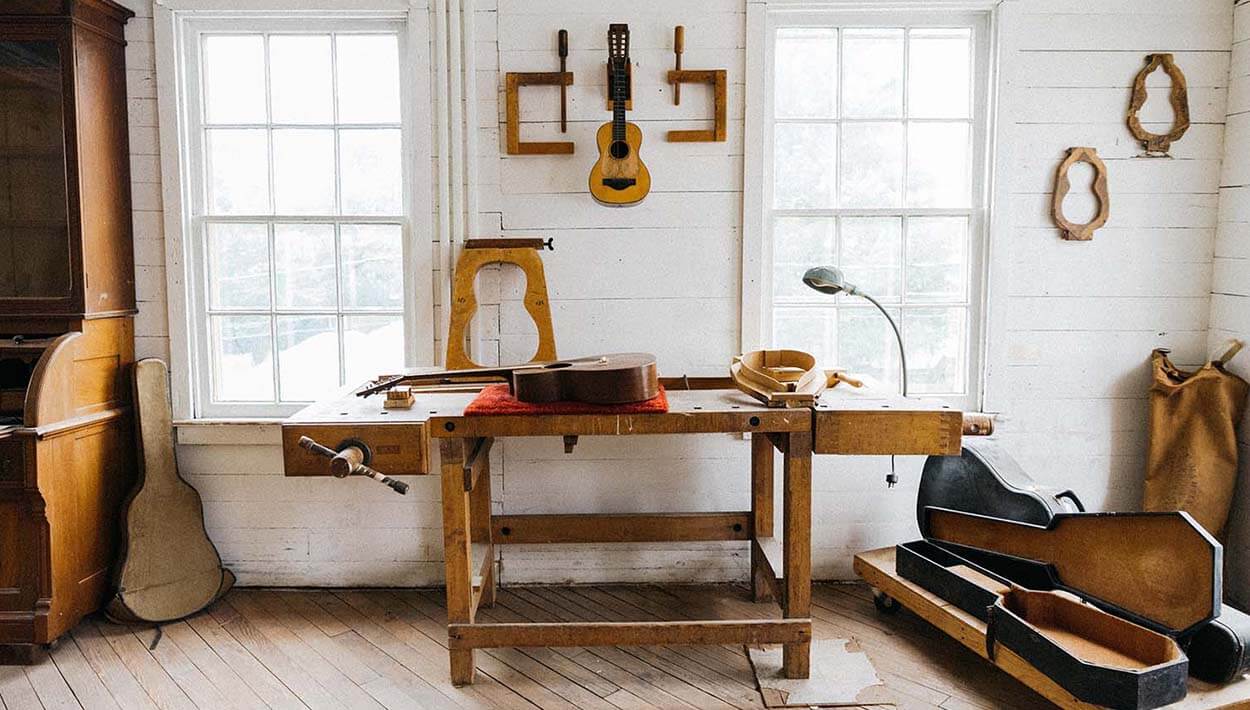













Comments
Interesting articles about Martin Guitars and the women and men who helped shape them!
Comment by Lynne Rosano on July 28, 2020 at 5:37 am[…] https://sheshreds.com/martin-guitars/ […]
Pingback by Martin Guitars and the Female Touch - Fanny's House of Music on July 30, 2021 at 10:13 am